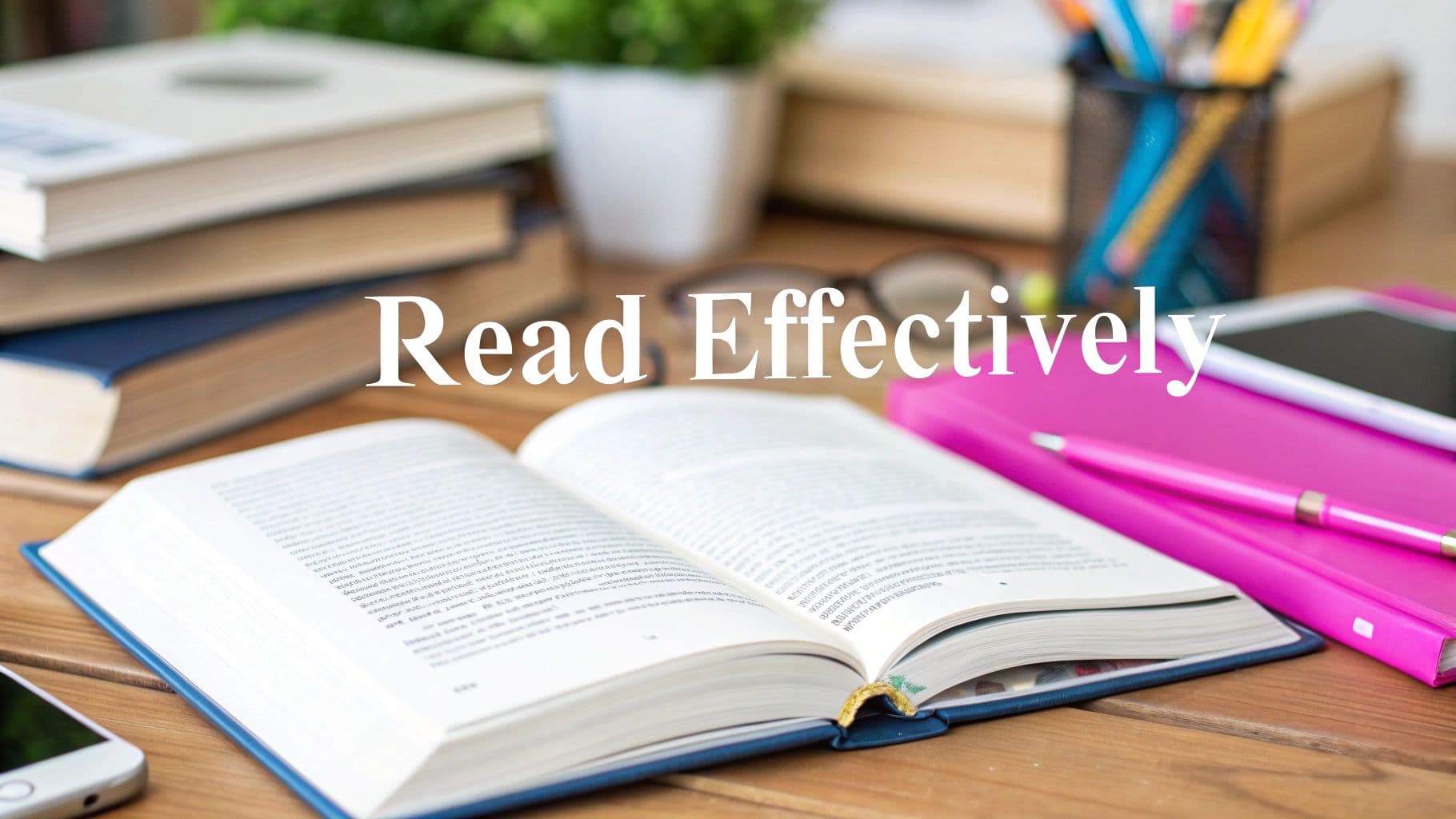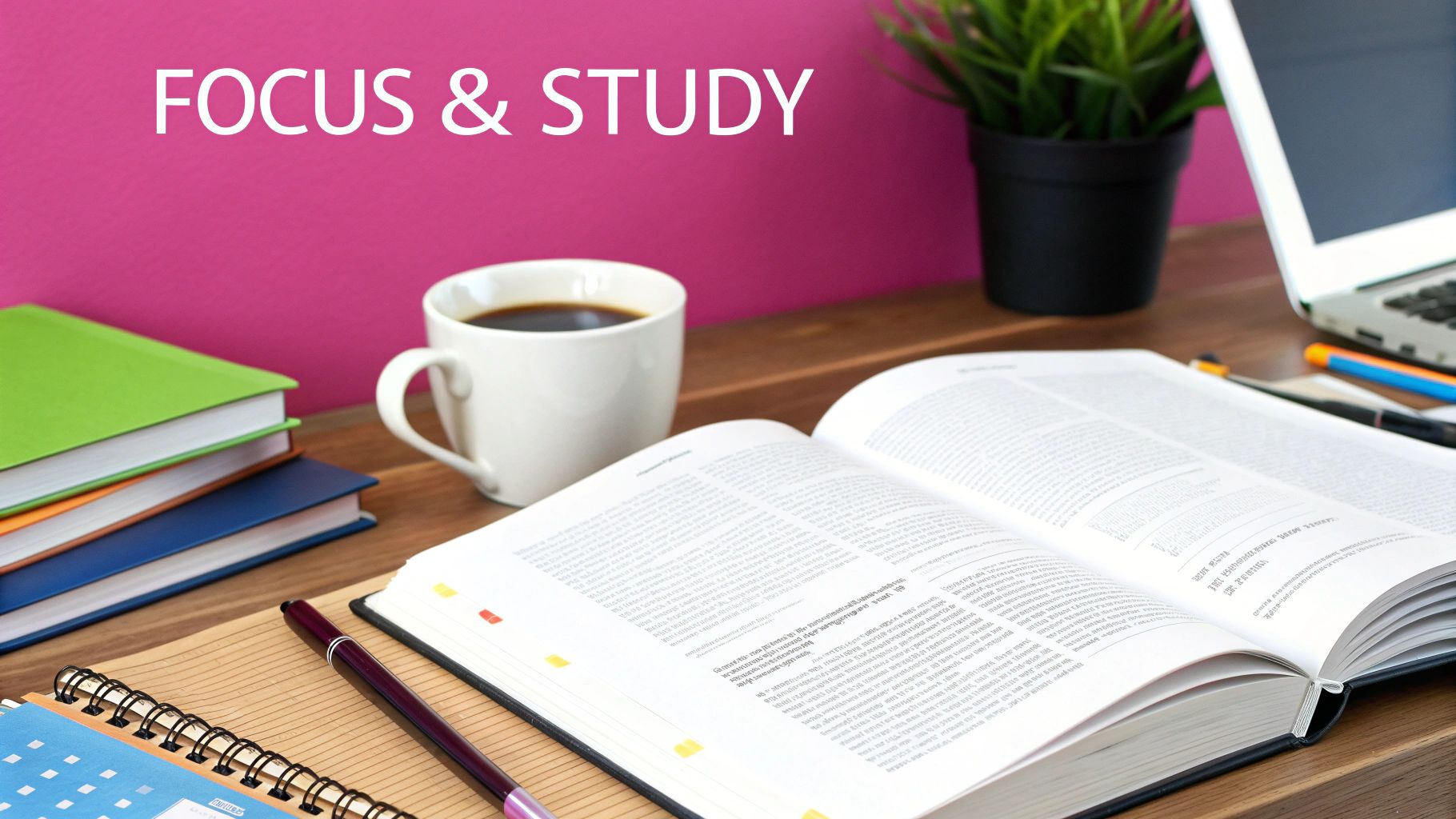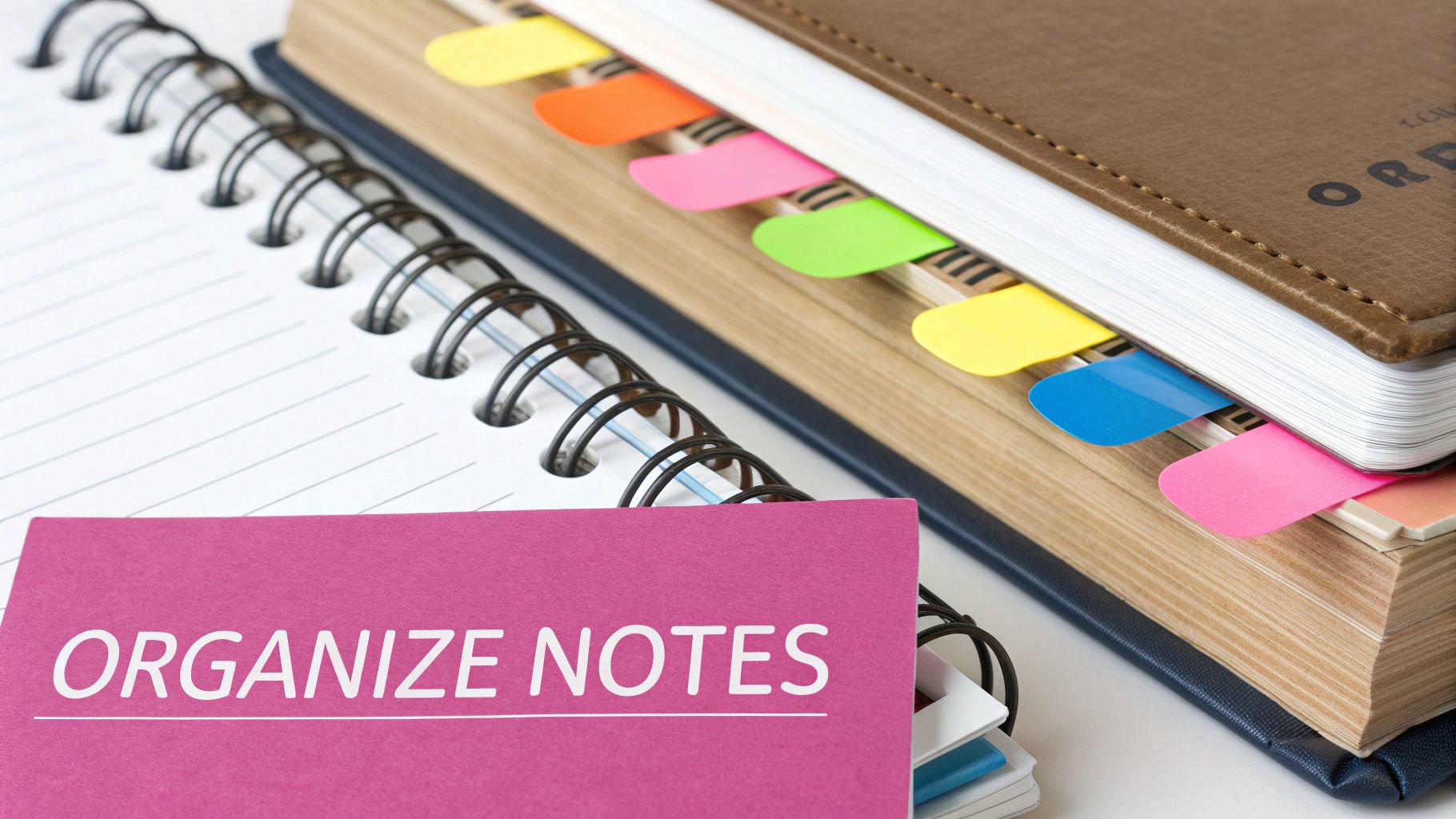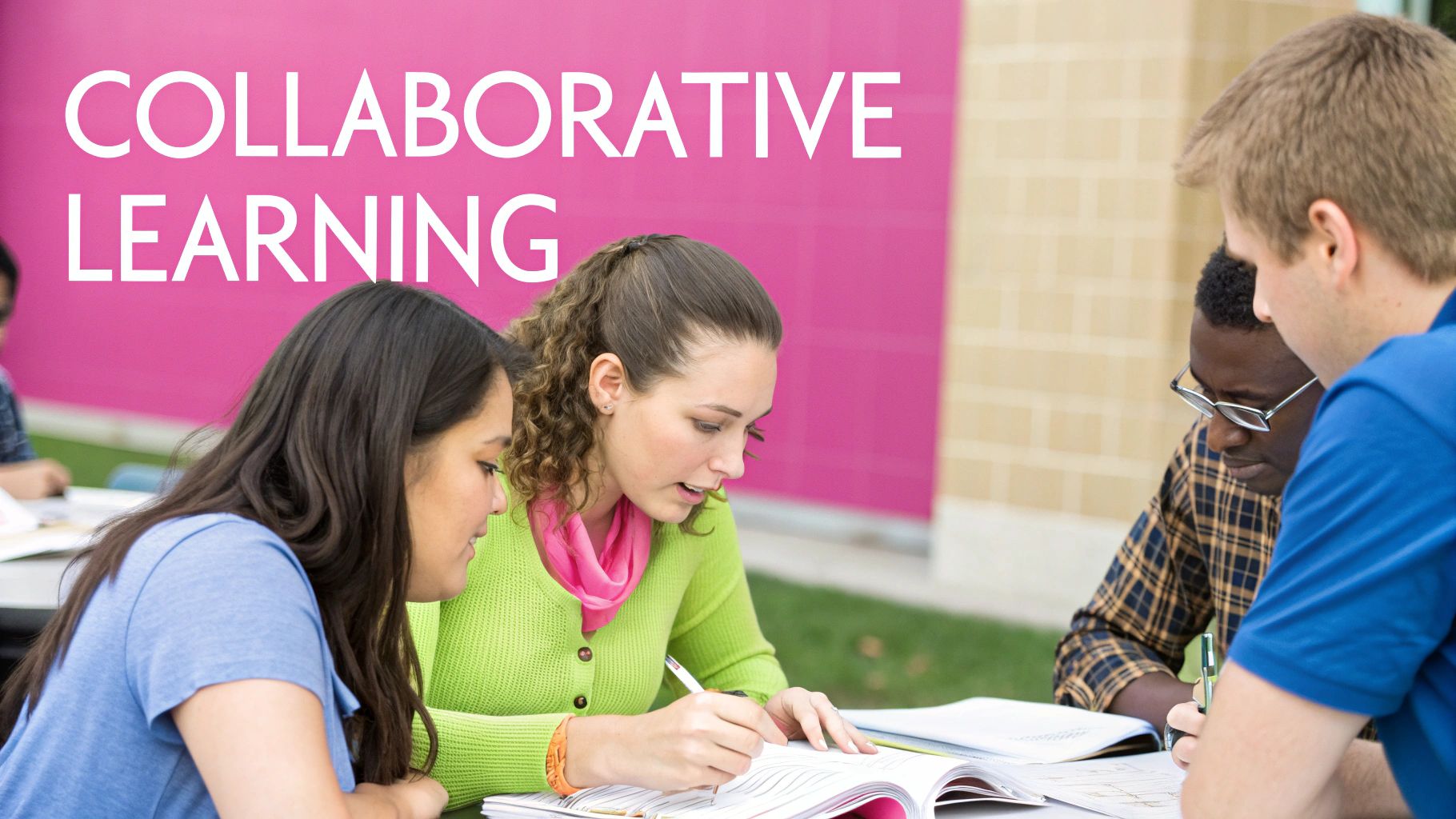
How to Read Textbooks Effectively: A Strategic Guide for Modern Students
Breaking Through Initial Reading Resistance
Most students get intimidated when they first open a textbook. The dense paragraphs and lengthy chapters can feel like an impossible mountain to climb. But by understanding what causes this initial resistance and learning practical ways to overcome it, you can transform textbook reading from a dreaded task into an engaging learning experience.
Understanding the Psychology of Resistance
Students often avoid their textbooks for several key reasons. Many see textbooks as dry, boring collections of facts with little connection to real life. This perception leads to procrastination and low motivation. The sheer amount of information also overwhelms students, making it hard to know where to start. When these feelings build up, it becomes easier to avoid the textbook entirely rather than face the discomfort.
Practical Strategies for Overcoming Resistance
There are several proven ways to push past this initial resistance. One effective approach is to break the reading into smaller, manageable segments. Rather than trying to read an entire chapter at once, focus on completing just 2-3 pages or one key section. This makes the task feel less daunting and gives you small wins to celebrate along the way.
You can also shift how you think about textbook reading. Instead of viewing it as a boring requirement, approach it with genuine curiosity about what you'll learn. Think of each chapter as an opportunity to discover interesting new ideas and perspectives. This mindset shift helps transform reading from an obligation into an engaging intellectual activity.
Building Momentum and Creating a Positive Feedback Loop
Success with textbook reading often comes down to building positive momentum. Start with sections that naturally interest you or clearly connect to your goals. As you complete these easier segments successfully, you'll gain confidence to tackle more challenging parts. This creates an upward cycle where each small achievement motivates you to keep going.
Creating a Conducive Reading Environment
Your study environment significantly impacts your ability to focus and learn effectively. Find a quiet, dedicated space away from distractions like phones, social media, and TV. Make sure you have good lighting to prevent eye strain and a comfortable chair that helps you maintain focus. Having the right physical setup removes common barriers that can derail your reading progress.
By applying these strategies consistently, you can overcome your initial resistance to textbook reading and develop more productive study habits. Remember that building new habits takes time – focus on steady progress rather than perfection. With practice, you'll find yourself naturally reaching for your textbooks instead of avoiding them.
Mastering the Art of Strategic Pre-Reading

Getting the most out of your textbook requires more than just opening it and starting to read. The key is to strategically preview the material first. By taking time to understand how the chapter is organized before diving in, you create a mental framework that helps you better absorb and retain the information.
Unveiling the Structure: Previewing for Success
Think of pre-reading like exploring a new city. Just as you'd first look at a map to understand the layout, previewing a textbook chapter helps you grasp how the information fits together. Start by examining the chapter title and headings – these give you the big picture view. For instance, in a biology chapter on "Cellular Respiration," you might see sections on "Glycolysis," "The Krebs Cycle," and "Electron Transport Chain." This quick scan shows you the main topics and their sequence, making the material less intimidating when you begin reading in detail.
Making the Most of Visual Elements
The diagrams, charts and images in textbooks serve an important purpose beyond decoration. These visual aids often explain complex ideas more clearly than words alone. As you preview, look closely at these elements and ask yourself what they're showing and how they connect to the text. Pay special attention to bold or italicized terms too – these highlight key vocabulary you'll need to understand. This approach is especially helpful in subjects like biology or engineering where visual learning is essential.
Using Summaries as Your Preview Guide
Chapter summaries, whether at the beginning or end, pack the main points into a concise overview. Reading these first primes your brain for what's coming. It's similar to reading a movie synopsis – you get the key plot points up front, making it easier to follow the full story. This preview helps you recognize important concepts when you encounter them in detail later. Try turning the summary points into questions – this shifts you from passive reading to active learning as you search for answers.
Adjusting Your Approach for Different Books
Since textbooks vary in their presentation style, your preview strategy should adapt accordingly. Text-heavy books need focus on finding main arguments and evidence, while visual-rich texts require more time analyzing diagrams and charts. By matching your preview method to the book's format, you'll get better results across different subjects. This flexible pre-reading approach transforms textbook reading from a chore into purposeful study time that helps you learn more effectively.
Breaking Down Complex Content

While pre-reading gives you a broad overview, mastering a textbook requires breaking down its content into smaller, understandable parts. This process involves more than just dividing text into chunks – it's about understanding how to read efficiently while keeping track of the bigger picture. Let's explore proven techniques that help make even challenging chapters more approachable.
Finding Natural Places to Pause
Just like a piece of music has built-in pauses, textbooks contain clear markers that signal good stopping points. These include headings, topic transitions, and the introduction of new concepts. For example, when reading a history textbook, you might notice a natural break between sections discussing war causes versus their effects. Visual elements like diagrams and charts often mark these transitions too. By recognizing these natural pauses, you can stop to process what you've learned before moving forward. This helps prevent feeling overwhelmed and keeps you actively engaged with the material.
Understanding How Ideas Connect
Breaking down a chapter only works when you can see how all the pieces fit together. Think of it like putting together a puzzle – each section connects to create the full picture. After reading one part, take a moment to consider how it builds on previous information and sets up what comes next. For example, a psychology textbook might first explain a theory, then show research supporting it, followed by real-world applications. When you actively look for these connections, scattered facts become a clear story, making the content easier to understand and remember.
Staying Focused During Long Reading Sessions
Reading a textbook takes stamina, but you can make it manageable by planning your breaks strategically. Instead of stopping randomly, pause at those natural breaking points you've identified. This way, you complete one clear section before taking a break, making it easier to pick up where you left off. Use these pauses to quickly summarize what you just read – it helps cement your understanding before moving on. By approaching longer readings this way, you turn what could be an exhausting task into a series of achievable goals, making the whole process more productive.
Developing Your Personal Reading Framework

Once you've mastered pre-reading and content breakdown, creating a personalized reading framework is the next essential step for effective textbook study. Rather than following rigid rules, this framework should align with how you naturally learn and process information while helping you get the most from your reading sessions.
Understanding Your Learning Style and Preferences
Start by identifying how you best absorb information. Visual learners often grasp concepts through diagrams and charts, while auditory learners may benefit from reading passages aloud or recording key points. Hands-on learners typically connect better with practical examples and real-world applications. Once you know your learning style, you can adjust your reading approach accordingly. For example, if you're a visual learner, try sketching concept maps as you read, or if you learn by listening, consider recording summaries to review later.
Integrating Effective Note-Taking Strategies
Good notes are vital for understanding and reviewing material later. The key is finding a note-taking method that clicks with your thinking process. The Cornell method works well for organized learners, with its structured layout for notes, questions, and summaries. Mind mapping helps those who think in connections and associations. Even basic outline notes can be powerful when done thoughtfully, capturing main ideas and supporting details. Test different approaches until you find what helps you best retain and understand the material.
Establishing a Consistent Study Routine
Regular reading habits form the foundation of effective learning. Set aside specific times for textbook study, but keep sessions focused and manageable. For instance, you might find that 30 minutes of concentrated reading followed by a short break works better than trying to push through longer periods. Add active recall techniques to your routine – pause periodically to explain concepts in your own words or quiz yourself on what you just read. This helps move information from short-term to long-term memory.
Adapting to Different Subjects and Time Constraints
Your reading approach needs flexibility to handle various subjects and schedules. A science textbook dense with formulas requires different tactics than a narrative-heavy history text. When time is limited, focus on grasping key concepts and main arguments rather than memorizing every detail. Being able to adjust your reading strategy keeps you effective across different courses and situations while maintaining good comprehension.
Maximizing Retention Through Active Engagement

While personalized reading frameworks and strategic pre-reading build a strong foundation, truly effective textbook reading requires active participation. The key is to shift from passively consuming information to actively engaging with the material in meaningful ways. By making this shift, you'll dramatically improve both your understanding and ability to remember what you read.
Multi-Sensory Learning for Enhanced Retention
Think about how you naturally learn new skills outside of academics – you rarely just read about them. Instead, you engage multiple senses – listening, discussing, and practicing hands-on. This same multi-sensory approach works wonders for textbook reading. Reading passages aloud activates your auditory processing, while taking notes or sketching diagrams engages motor skills. Research shows that involving multiple senses significantly improves how well you recall and retain information over time.
Practical Techniques for Active Engagement
There are many effective ways to actively engage with textbook material beyond basic reading and note-taking. Here are some proven techniques:
- Concept Mapping: Create visual diagrams showing how different ideas connect. This helps transform abstract concepts into concrete, memorable relationships that stick in your mind.
- Verbal Summaries: After each section, pause and explain the main points in your own words, as if teaching someone else. This forces you to process and organize the information meaningfully.
- Incorporating Movement: Take short breaks to walk around or stretch. Physical movement increases blood flow and attention, helping you focus better when you return to reading.
The Power of Teaching and Discussion
One of the most effective ways to master any concept is to teach it to others. When you explain a complex theory to a classmate, you quickly discover gaps in your understanding and must articulate ideas clearly. Group discussions also provide valuable opportunities to hear different perspectives, clarify confusing points, and deepen your grasp of the material through varied interpretations.
Self-Testing: A Crucial Step for Retention
Regular self-testing helps gauge your understanding and identify areas needing review. Create practice questions, use flashcards, or simply recall information from memory without looking at the text. This active recall strengthens memory pathways for long-term retention. The SQ3R method (Survey, Question, Read, Recite, Review) provides a structured approach – preview chapters, form questions, read for answers, recite key points, and review material thoroughly.
By consistently using these active engagement techniques, you'll transform textbook reading from a passive task into an engaging learning experience that leads to deeper understanding and better retention. This foundation in active learning sets you up to effectively measure and improve your progress, which we'll explore next.
Measuring Progress and Refining Your Approach
To get the most out of your textbook reading, you need to track your progress and fine-tune your approach over time. While actively engaging with the material is essential, regularly evaluating your methods ensures you're studying effectively and making real progress. This means paying attention not just to what you're learning, but how well your reading strategies are working.
Setting Measurable Goals and Tracking Progress
Monitoring your textbook reading is like keeping a training log – it helps you identify what's working and what needs improvement. Begin by setting specific, achievable goals. Rather than a vague aim to "read more," commit to concrete targets like completing 20 pages per day or mastering one key concept each week. Test your understanding regularly through practice problems and self-quizzes. For example, if you notice you consistently struggle with certain types of physics problems, you can focus extra attention there or seek additional help. This focused approach helps you learn more efficiently and remember information longer.
Identifying Areas for Improvement Through Self-Assessment
Taking time to evaluate your reading habits is key to getting better results. Pay attention to patterns in your study sessions – when are you most focused? Where do you tend to get stuck? Maybe you find your mind wandering during long reading blocks, or perhaps you have trouble recalling key points after finishing a chapter. Be honest with yourself about these challenges. For instance, if you realize you often skip the pre-reading phase, try spending 5-10 minutes previewing chapter summaries and main headings before diving in. Regular self-checks like this create opportunities to keep improving.
Adapting Your Strategies Based on Results
Once you spot areas that need work, be ready to adjust your approach. You might need to try new note-taking methods, find a quieter study space, or add more active recall practice to your routine. Being flexible with your strategies leads to better results over time. If highlighting key terms isn't helping you remember important concepts, switch to making flashcards or writing brief summaries in your own words after each section. Think of it like adjusting your workout routine – you keep modifying your approach until you find what gives you the best results.
Building Confidence in Your Reading Abilities
Tracking your progress isn't just about finding weak spots – it's also about recognizing how far you've come. As you see improvements in your reading speed, understanding, and ability to remember what you've learned, your confidence grows naturally. This creates positive momentum that makes you want to keep developing better study habits. When you successfully use techniques like SQ3R to break down a complex chapter, you gain confidence to tackle even more challenging material. This growing sense of capability helps you approach your studies with greater focus and effectiveness.
Ready to transform your study sessions and conquer your textbooks? Notescast is the innovative app that turns your notes and study materials into engaging video content. Stop struggling with dense text and start learning more effectively with brainrot videos designed to enhance retention and focus. Visit https://notescast.app/ today to discover a new era of studying!
